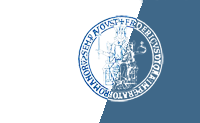Vinciguerra, Roberto (2016) Proteomics and Cultural Heritage. [Tesi di dottorato]
Anteprima |
Testo
PhD Thesis Roberto Vinciguerra.pdf Download (26MB) | Anteprima |
| Tipologia del documento: | Tesi di dottorato |
|---|---|
| Lingua: | English |
| Titolo: | Proteomics and Cultural Heritage |
| Autori: | Autore Email Vinciguerra, Roberto roberto.vinciguerra@unina.it |
| Data: | 31 Marzo 2016 |
| Numero di pagine: | 170 |
| Istituzione: | Università degli Studi di Napoli Federico II |
| Dipartimento: | Scienze Chimiche |
| Scuola di dottorato: | Scienze chimiche |
| Dottorato: | Scienze chimiche |
| Ciclo di dottorato: | 28 |
| Coordinatore del Corso di dottorato: | nome email Paduano, Luigi lpaduano@unina.it |
| Tutor: | nome email Birolo, Leila [non definito] |
| Data: | 31 Marzo 2016 |
| Numero di pagine: | 170 |
| Parole chiave: | Proteomics, Cultural Heritage, Mass Spectrometry |
| Settori scientifico-disciplinari del MIUR: | Area 03 - Scienze chimiche > CHIM/10 - Chimica degli alimenti |
| Depositato il: | 11 Apr 2016 16:58 |
| Ultima modifica: | 30 Nov 2016 02:00 |
| URI: | http://www.fedoa.unina.it/id/eprint/10923 |
Abstract
Proteins represent an important constituent in many art and archaeological objects. Notable proteinaceous materials, such as animal glue, egg (both yolk and albumen) and milk have long been used in artwork as painting binders, as adhesives for gildings, or they were included in mortars and paint grounds. The identification of protein-based material is an important information to understand the manufacturing process; it provides insights in the technique used by an artist, essential information for art historians. Moreover, it may also support the choice of the most appropriate conservation or restoration procedures. Proteomics is typically considered to be associated with the study of living organisms. However, its inherently multidisciplinary nature has recently led to its application to oddly assorted areas ranging from forensics, food analysis, and clinical medicine and even for studying the origins of life. In recent years, proteomics procedures have become increasingly popular for the characterization of proteinaceous materials in ancient samples of several cultural heritage objects. Proteomics for cultural heritage is still in its infancy, with the first paper dating back to the early 2000. In particular, protocols routinely applied for typical modern samples still need to be fully adapted to take into account the low amount of proteinaceous material, the heterogeneity and the unusual physical state of the samples, as well as the high levels of damage found in ancient samples. Modern mass spectrometry instrumentations are perfectly adequate to afford the minimal quantities of ancient samples. A micro-invasive protocol, in fact, proved to be successful when applied to fragments of paintings from the collapsed vault of the Basilica di S. Francesco in Assisi, and samples collected from the Camposanto Monumentale in Pisa. Generally, by the use of these methods, we can easily identify complex protein mixtures in very complex and heterogeneous matrix. Nevertheless, samples coming from artwork have an intrinsic contamination problem that originates from environmental exposure. In addition, the physical state of the samples, enormously different from the natural environment of proteins, and the degradation processes undergone during aging provide unusual problems that require to be counteracted. Therefore, all the steps of the proteomic procedure need to be thoughtfully adapted, from the optimization of specific protocols for sample preparation to the development of data analysis tools that can cope with ancient or damaged samples. In this perspective, my PhD project was devoted to this challenge as well as to the specific application of the developed strategies to diverse samples from works of art.
Downloads
Downloads per month over past year
Actions (login required)
 |
Modifica documento |




